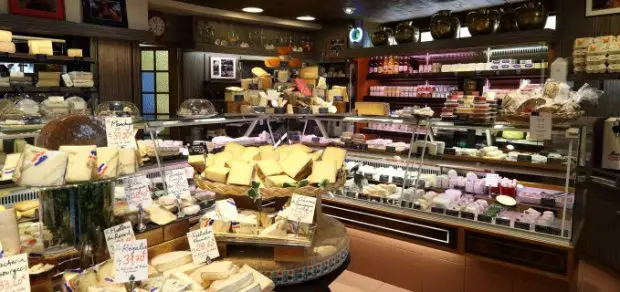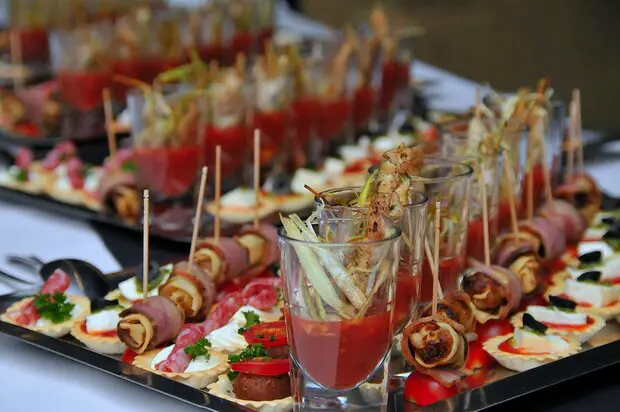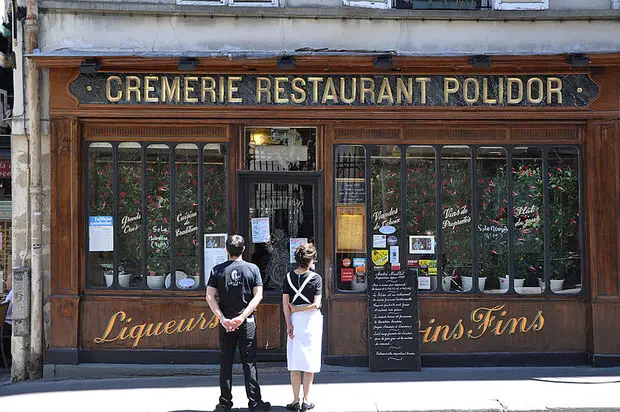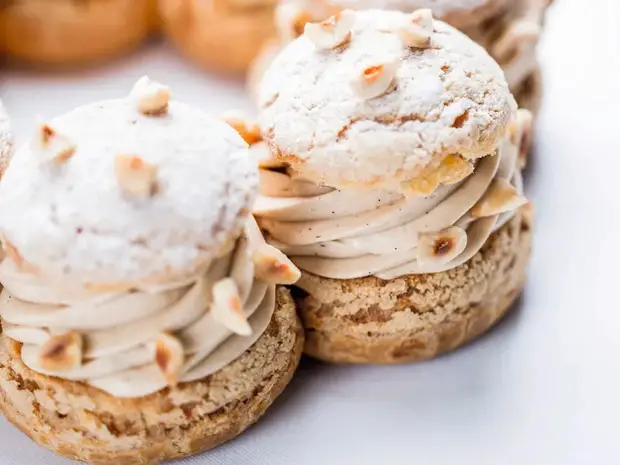Before becoming the capital of France, Paris was known as the capital of gastronomy. It’s often overlooked that before evolving into a megalopolis, Paris was an area with extensive agricultural production. So, let’s explore the typical dishes and specialties of Paris together.
To kick off this list, here’s a handy infographic on typical Parisian specialties:
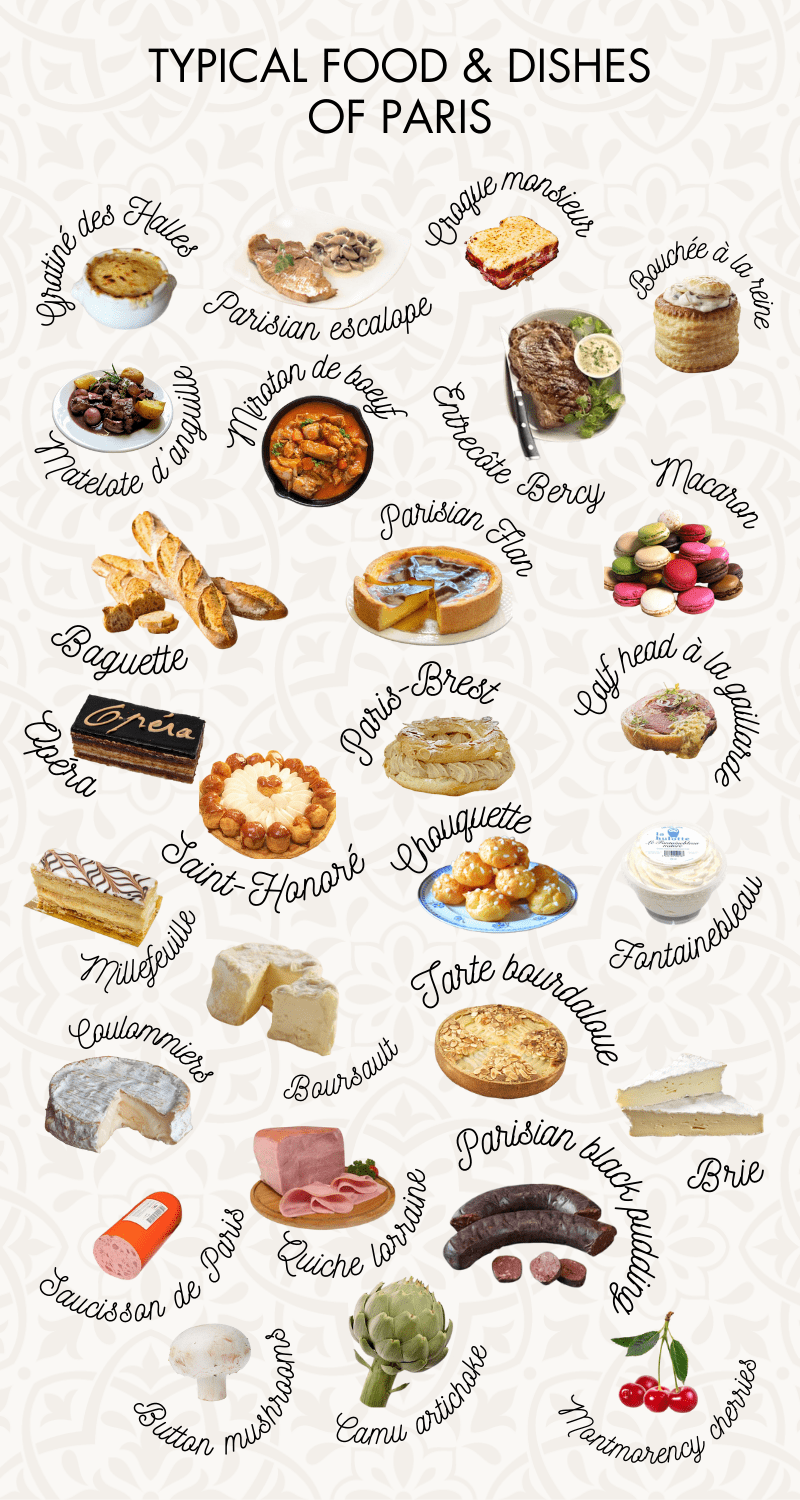
Table of Contents
Dishes
The gratinée des Halles
Voir cette publication sur Instagram
The gratinée des Halles is simply a Parisian version of the classic onion soup. Made with beef or poultry broth, onions, butter and bread. Then, as the name suggests, a layer of Gruyere cheese is added.
Onion soup has existed since the 17th century. But the Parisians simply added a layer of Gruyere cheese to the recipe to make it their own.
It is named after Les Halles because that is where it was popularized in Paris. This covered market had to feed many workers, and the Gratinée des Halles had the best price to quality ratio.
Parisian escalope
The Parisian escalope is inspired by the Wiener Schnitzel, a German dish.
The Parisian recipe consists of breading salted veal meat in beaten egg and flour, but it does not contain any breading. Then the cutlet is cooked in rapeseed oil or butter.
This dish was presented at the World Fair in Paris in 1889.
Croque-monsieur
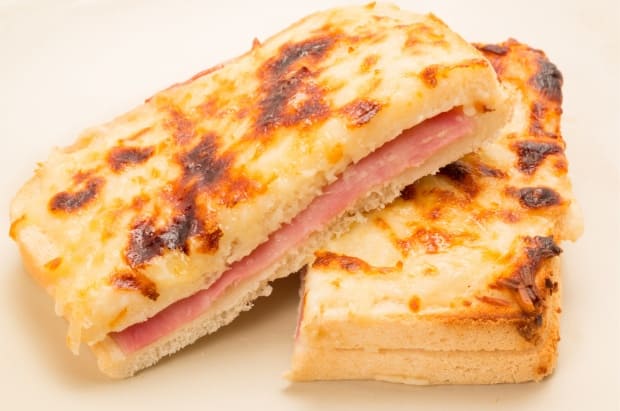
The croque-monsieur; this Parisian dish known by all is very simple to make, and very delicious.
It first appeared in a café in the 16th arrondissement, when a cook ran out of baguette to make a sandwich.
This Parisian bistro dish is composed of two slices of bread, with a slice of Parisian ham in the middle, with grilled béchamel and Emmental cheese.
The croque-monsieur is successful thanks to its low price and its tastiness.
Bouchées à la reine
Voir cette publication sur Instagram
Bouchées à la reine were invented in the 18th century by the cooks of the Versailles court.
Queen Marie Leszczynski, the wife of Louis XV, ordered an aphrodisiac dish to keep her husband loyal.
The cooks concocted the “bouchées à la reine”: an individual croustade made with flaky pastry in the shape of a timbale, filled with a salpicon of ingredients cut into small cubes (poultry, sweetbreads, mushrooms, ham…) bound together by a thick sauce (bechamel sauce, forest sauce, supreme sauce…).
Matelote d’anguille (eel stew)
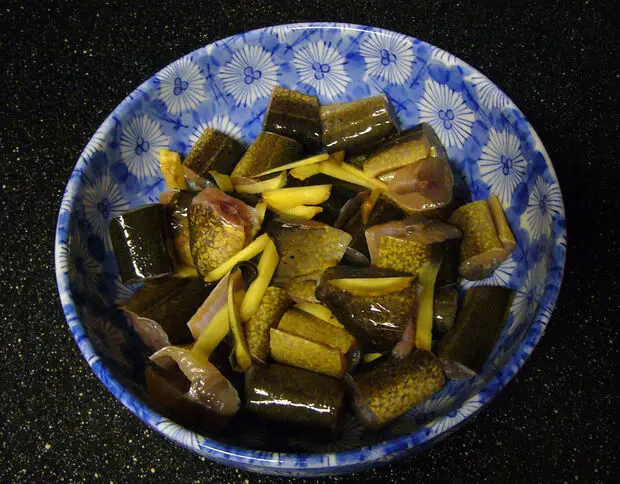
Matelote d’anguille was popularized in the guinguettes of the Marne and Seine banks, at the end of the 18th century.
This dish consists of marinating eels in red wine and cognac, an onion, crushed garlic cloves and a bunch of herbs as well as mushrooms, spring onions, fish stock, salt, pepper and parsley.
This sailor’s dish has become a Parisian specialty.
Miroton de boeuf
A traditional dish of French cuisine, the Miroton de boeuf was first made at the end of the 18th century.
To cook a Miroton de boeuf, you need beef, onions, garlic, olive oil, salt and pepper, red wine and finally pickles which are to be added after cooking.
This dish was particularly popular with grandmothers because it is advised to reuse the leftover pieces of meat from a stew.
Entrecôte Bercy
Bercy was the old wine arrival district (second only to the wine market). Wine merchants made this dish in white wine sauce very popular.
L’entrecôte Bercy, a typical Parisian dish but especially from the Bercy district. It is a beef (at the time horse) rib steak grilled with parsley and watercress. A sauce made of white wine, lemon juice and shallots is used to accompany it.
Calf head à la gaillarde
Calf head à la gaillarde is also called Calf head with ravigote sauce or gribiche sauce. This bistro dish is best eaten in winter.
The dish is composed of a calf’s head and tongue simmered for 2 hours with root vegetables (onions, carrots, turnips, leeks…) accompanied by a sauce ravigote that awakens the taste buds. This sauce is composed of chopped fresh herbs, capers and chopped gherkins, oil and vinegar.
This dish originated in Brive-la-Gaillarde, but thanks to its inexpensive ingredients and comforting broth, it quickly spread to the bistros of Paris.
Bread and Pastries
Baguette
Voir cette publication sur Instagram
Made from flour, water, salt and yeast, the crisp, golden Parisian baguette is an important symbol of Parisian and French gastronomy.
Legend has it that it was invented on the construction site of the Paris metro in the 18th century. A bread that is cut without a knife to avoid the fights between the Breton and Auvergn workers.
This bread was much easier and faster to make because instead of using sourdough, yeast was used. It quickly became widespread during the Second World War.
Parisian Flan
Voir cette publication sur Instagram
The Parisian flan or flan pâtissier is a classic pastry of French cuisine. It is similar to other pastries such as the Portuguese Pastel de Nata, or the British Custard Tart.
Originally from Amiens, the flan is made with shortcrust pastry, eggs, milk, sugar and cornstarch.
It can also be made with chocolate, caramel, candied fruits or coconut.
Macaroon
Voir cette publication sur Instagram
Made from almonds, powdered sugar, sugar and egg whites, the macaroon is a small round cake. It is filled with ganache whose taste can differ (raspberry, chocolate, vanilla, pistachio, lemon…)
The macaroons were created in Arab countries, at the time they were eaten as simple cookies, without ganache. They are the specialty of several cities in France but have become popular thanks to the Parisian pastry houses Ladurée and Pierre Hermé.
Chouquettes
Voir cette publication sur Instagram
Chouquettes are made with choux pastry sprinkled with coarse sugar.
Choux pastry was invented in the 16th century by an Italian pastry chef. The chouquettes, however, originate from the city of Paris. The city’s pastry chefs loved to use choux in many pastries: religieuses, pets de nonnes, Paris-Brest…
Paris-Brest
Voir cette publication sur Instagram
This rounded cake is made with choux pastry filled with praline mousseline cream, sprinkled with flaked almonds.
Created by the Maisons-Laffitte pastry house, this bicycle wheel-shaped cake evokes neither the city of Paris nor the city of Brest but the Paris-Brest-Paris bicycle race. In 1909, a pastry chef from Maisons-Laffitte was tasked to create a pastry to promote the bicycle race. He came up with this choux pastry in the shape of a bicycle wheel.
The Paris-Brest can be declined with a coffee, chocolate or vanilla mousse, in a square or rectangular shape. Even if the taste remains similar, the traditional Paris-Brest is still round and crown-shaped.
Saint-Honoré
Voir cette publication sur Instagram
The Saint-Honoré, an emblematic pastry of Paris, is made with a base of puff pastry, whipped cream, chiboust cream and small sugar-glazed choux.
It was created in the 19th century by the Chiboust house, which was inspired by the Bordeaux dessert, the Swiss flan: a brioche filled with whipped cream.
It is named after the rue Saint-Honoré, where the Chiboust house was located. Saint-Honoré is also the patron saint of bakers, the eighth bishop of Amiens. Thus this pastry shop was a huge success.
Opéra
Voir cette publication sur Instagram
Invented in 1955 by the son of the Ritz pastry chef, the Opéra is a cake that can be eaten in one bite and all its layers are visible.
This pastry is composed of two layers of coffee buttercream and a chocolate ganache, all between two joconde cookies with coffee syrup, with a gold leaf cover.
Originally designed to please the dancers at the Opera, this cake now has a place in the most famous pastry houses in Paris.
Tarte Bourdaloue
Voir cette publication sur Instagram
Conceived in the 19th century in rue Bourdaloue in Paris from which it takes its name, this tart is now an emblematic Parisian dessert.
It is composed of a shortcrust pastry, large slices of pear topped with frangipane or almond cream.
Mille-feuilles
Voir cette publication sur Instagram
It became the specialty of the pastry chef Adolphe Seugnot in the rue du Bac in Paris, the mille-feuille was created by François Pierre de La Varenne in the 17th century.
It is composed of three layers of puff pastry, and two layers of pastry cream. The top is glazed with fondant or powdered sugar.
This puff pastry’s recipe has crossed the centuries, it is now a French specialty but especially a Parisian one.
Cheese
Coulommiers
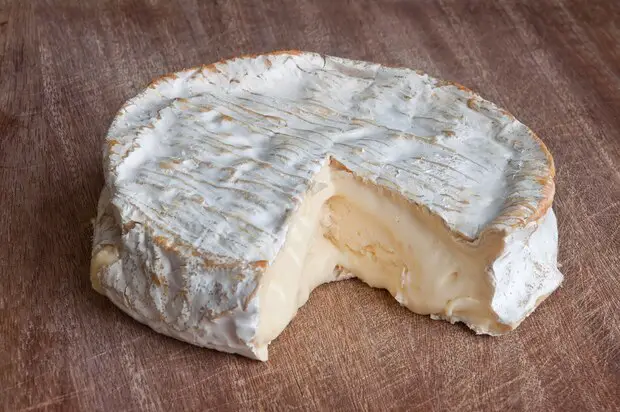
Specialty of Coulommiers, in Seine-et-Marne, near Paris, Coulommiers has been present in the gastronomic heritage since the Middle Ages.
It is a cheese made from cow’s milk, it has a soft unpressed and uncooked paste. Even though Brie is no longer produced in Coulommiers, the texture and taste of Coulommiers are similar to Brie.
Brie
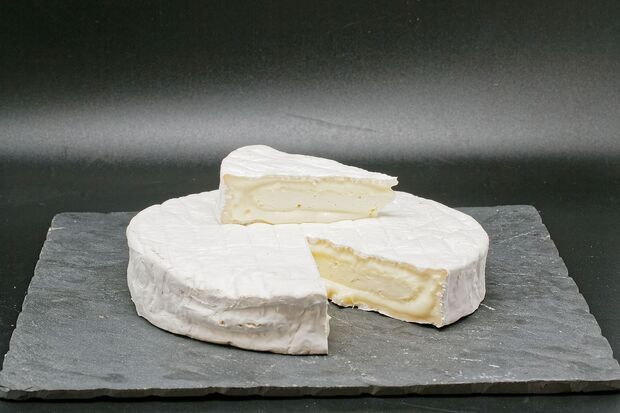
Made from cow’s milk, Brie from Meaux, Melun, Montereau or Coulommiers, are always present in the Parisian markets.
Following their ancestral production process, their raw milk paste is similar to Camembert in terms of taste and texture.
This cheese is eponymous: it bears the name of the Brie region, which stretches between the valleys of the Marne, the Orge, the Seine and the coast of Ile de France.
Boursault from Saint-Cyr sur Morin and Tournan-en-Brie
Originating from Saint-Cyr-sur-Morin and Tournan-en-Brie, Boursault is a cheese with double cream and shaped like a small high cylinder.
Its creator, Boursault, has kept the recipe to himself. This artisanal cheese is now taken over by an industrial cheese factory and sold in supermarkets.
Fontainebleau
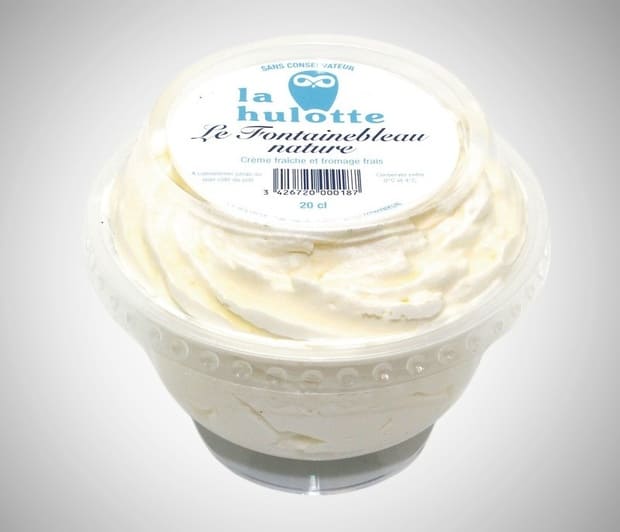
Created by the Barthélémy family, Fontainebleau is a fresh cheese with whipped cream, usually served in a round dish. Its mousse is creamy and airy.
The recipe for Fontainebleau is not registered, so its recipe may vary. The original recipe does not add milk or cheese, it is a whipped cream mixture.
Charcuteries and Meats
Jambon de Paris
Voir cette publication sur Instagram
Jambon de Paris, also known as white ham, is quite well known. It can be found in the famous Parisian ” jambon-beurre ” sandwich, in a croque-monsieur, a plate of ham purée, or in endives with ham.
This ham known to all has been sold in slices since the 18th century, in the Paris region, and was at the time was considered an expensive and good quality meat. It is marketed in different qualities: traditional, superior, or “au torchon”.
The traditional recipe for Jambon de Paris is a cooked ham, which is then poached in a flavored vegetable broth.
Saucisson de Paris
Voir cette publication sur Instagram
Saucisson de Paris, also known as Paris-ail or Paris sausage, requires special preparation.
It is a pork-based sausage, to which is added a preparation of egg white, salt, pepper, spices and chopped fresh garlic. It is the garlic that gives this sausage its strong and characteristic taste.
This sausage can be served alone in slices or in sauerkraut.
Parisian black pudding
Originating in Paris, the black pudding is made of one-third pork blood, one-third pork fat and one-third cooked yellow onions.
This plump black pudding is one of the oldest charcuterie products in existence. In the Middle Ages, it was eaten in taverns.
There are many recipes for black pudding in France, but the Parisian black pudding is a huge success because its recipe is the only one that distributes its ingredients evenly, making it very melting and flavorful.
Fruits and Vegetables
Button mushrooms
Voir cette publication sur Instagram
First seen in Versailles, button mushrooms have an important part in traditional French cuisine. They are present in blanquette of veal, bourguignon beef, and forest sauces, they are also a specialty of the city of Paris.
At the beginning of the construction of the Paris metro, these mushrooms were growing in the catacombs. They were then moved to the city of Saumur.
Today they are grown in humid galleries. Rich in minerals, vitamins and trace elements, it is an emblematic food in Paris as well as in all of France.
Camus de Bretagne Artichoke
Voir cette publication sur Instagram
Much appreciated by French kings during the Renaissance, this artichoke made its first appearance at Versailles in the 18th century and became the favorite vegetable of Louis XVI.
Artichokes are the result of different botanical crossbreeding; there are countless species.
It was in the 19th century that a Parisian agronomist created the species preferred by Parisians today: the Camus de Bretagne artichoke.
Montmorency cherries
Voir cette publication sur Instagram
The Montmorency cherries, near Paris, are a category of small and slightly acidic cherries: Morello cherries.
They have been cultivated ever since the 18th century in Montmorency. Parisians often went there to pick them, they rented the trees by the hour to enjoy the cherries on the spot.
The cherries are harvested starting from mid-June, however even if these cherries are fully part of the Parisian culinary heritage, the Montmorency cherries tend to disappear to make room for other varieties of cherries.
I aim to share my tips and recommendations for the beautiful country of France. My goal is to help you plan your next adventure, whether it’s a weekend getaway or a once-in-a-lifetime trip. From finding the best hotels and restaurants, to discovering unique activities and sights, I’ve got you covered!

